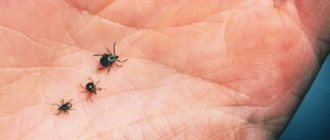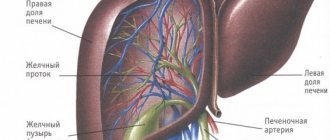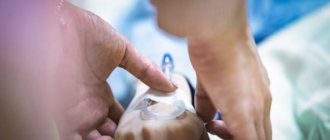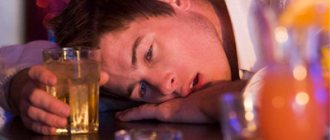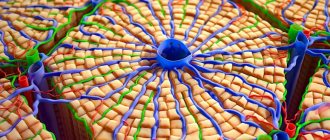Causes of liver dysfunction How liver restoration occurs Non-drug restoration of the liver The liver performs many functions in the human body. First of all, it is a filter that purifies the blood and neutralizes various harmful substances, toxins and allergens. The liver is involved in the metabolism of proteins, fats, carbohydrates, hormones, vitamins and microelements. It plays an important role in digestion, as it produces bile necessary for digestion and converts nutrients received with food into energy. That is why disruption of the functioning of this organ can cause irreparable harm to human health. If symptoms such as heaviness in the side, itching of the skin, or a feeling of bitterness in the mouth are detected, you must immediately consult a doctor who will conduct the necessary studies, make a diagnosis, tell you about all the stages of liver recovery and prescribe appropriate treatment.
Causes of liver dysfunction
Poor nutrition
. Abuse of fatty foods, smoked meats, pickles, hot seasonings - all this can lead to various diseases. When the amount of harmful substances entering the body becomes too large, the liver is unable to neutralize all the toxins. The development of obesity due to poor nutrition is dangerous for health, but attempts to suddenly lose weight can also cause problems. In an extreme situation, the liver turns on protective mechanisms and begins to quickly accumulate fats and carbohydrates, which provokes damage to the organ.
Alcohol abuse
. A fairly common cause of liver damage is systematic and excessive consumption of alcoholic beverages. Constant intoxication of the body can lead to disruption of the functions and structure of this vital organ. The cells involved in neutralizing alcohol increase in size. As a result of accelerated synthesis of fatty acids, alcoholic liver damage occurs.
Hepatotoxic effects of medications
. Long-term use of certain medications without a doctor's prescription (for example, antibiotics) can cause effects no less severe than damage to the body from toxins or poisons.
Against the background of poor nutrition, excessive alcohol consumption, and uncontrolled use of medications, the development of hepatosis, cirrhosis, toxic liver dystrophy, cholelithiasis, acute or chronic hepatitis can occur. Often, exposure to negative factors leads to dystrophic, necrotic and fibrotic changes in the organ. Irreversible disruption of the full functioning of the gland leads to liver failure. In turn, this can provoke serious metabolic disorders and intoxication of the body, including death.
Side effects and contraindications
According to hepatologists, tubing can be performed at home only for the purpose of prevention, provided that the patient has no contraindications for the procedure or chronic diseases. To prevent complications, tubing is strictly prohibited when:
- diabetes mellitus;
- cholelithiasis;
- cholestasis;
- inflammation of the gallbladder;
- acute colds;
- hepatitis;
- oncological neoplasms;
- exacerbation of chronic diseases;
- pathologies of the pancreas, heart, kidneys, stomach;
- pregnancy or lactation;
- menses;
- allergic reactions to the ingredients or drugs used;
- organ dystrophy, acute pancreatitis or hepatitis;
- parasitic diseases
How does liver recovery occur?
The process of liver recovery after alcohol, poor diet or long-term use of medications takes quite a long time. However, this unique organ has the ability to self-heal, which makes the task much easier. The formation and growth of liver cells is as follows:
- restoration of damaged hepatocytes
. Liver cells are damaged under the influence of negative factors, but not all of them die. Some hepatocytes can recover and begin to perform their functions again as before; - the birth of new hepatocytes
. For every dead cell there are several new ones. However, the regeneration process takes a very long time and can last for several years. However, it is important to note that under favorable conditions, renewed hepatocytes are able to completely restore the damaged liver; - growth of existing hepatocytes
. This reserve liver repair mechanism is activated when young cells are not able to replace damaged ones in the required volume. Existing hepatocytes increase in size and take their place, restoring the functioning of the organ. This process is a temporary measure. Growing cells must eventually fall into place. Otherwise, the enlarged hepatocytes wear out, which can lead to the development of hepatitis; - replacement of affected cells with connective tissue
. If the liver is seriously damaged, even the growth of remaining hepatocytes will not be able to restore it to its previous volume. As a result, complete degeneration occurs, and the gaps are filled with connective tissue, which forms scars. Naturally, in this case there is no question of the normal performance of liver functions. As new cells form and grow, these areas disappear. But if the process gains momentum, cirrhosis develops.
Services of our clinic
Our clinic has long been using Dr. Borisov’s original method. Selective chronophototherapy (SCPT), which is based on photodynamic therapy, is capable of activating a cascade of biochemical and cellular reactions to regulate the level of immune status indicators. A special substance is introduced into the body - chlorophyll (a natural photosensitizer of the latest generation), which accumulates in cancer cells. A laser beam is sent to the site of accumulation, capable of synchronizing with the patient’s rhythms, which makes it possible to reduce or increase the intensity of the effect. Penetrating to the required depth, it concentrates on pathological cells, destroying them, without touching healthy ones. Over the course of several months, the tumor disintegrates. It is practiced both in combination with surgical methods, as well as before and after surgical interventions, and individually. A wide range of possibilities makes it possible to use it when chemotherapy and radiation therapy are ineffective or due to the severe somatic condition of the patient.
For this purpose, a hardware laser with a certain wavelength is used. The choice of modes also makes it possible to carry out fluorescent diagnostics in order to detect the source of inflammation if it is located on internal organs. A pre-introduced latest generation photosensitizer (chlorophyll) helps to find and eliminate tumors. Accumulating in the affected tissues, it begins to destroy them under the influence of the beam. Vascular spasms occur, nutrition and growth of the tumor stops.
PDT is well tolerated by people of any age and gender. Unlike chemotherapy, it has a number of advantages:
- efficiency and safety;
- positive prognosis of the disease;
- improving the patient’s quality of life;
- minimal number of complications and side effects;
- ease of use;
- accessibility and selectivity of impact even in the most inaccessible places.
Non-drug liver restoration
It is important to understand that the liver’s ability to recover after alcohol is fully activated only if a healthy lifestyle is followed. The same goes for nutrition and taking medications. The liver needs help, so to normalize all functions of the organ, it is extremely important to adhere to a diet. In particular, the diet should contain:
- vegetables,
- greenery,
- fruits,
- fish,
- lean meat,
- honey,
- nuts,
- dairy products,
- eggs.
Food can be consumed raw or fermented, boiled, steamed and baked. The preferred drinks are pure water, compotes of berries and dried fruits, and natural juices. It is necessary to completely exclude from the menu fatty and unhealthy foods, smoked foods, seasonings, canned food, butter, confectionery, bread, and sweets. Alcoholic and carbonated drinks, strong black tea and coffee are also prohibited. It is important to eat often and in small portions for better absorption of food. Vitamins (B, C, D, E) and minerals (zinc and selenium) play a huge role in normalizing liver function, therefore, as part of non-drug therapy, experts recommend taking complexes with an optimal ratio of nutrients.
Method No. 5. Apple juice
The juice should be homemade, freshly squeezed from sour varieties. This method of cleansing requires the mandatory use of an enema and a three-day diet.
Contraindications:
- exacerbation of cholecystitis;
- exacerbation of peptic ulcer;
- impaired metabolism;
- pregnancy;
- elderly age.
Schemes for cleansing the liver with an apple nipple can be as follows.
Scheme No. 1
- Give an enema. Drink exclusively apple juice throughout the day. Volume is not limited.
- The second day is the same as the first.
- Third day: drink juice before 18.30. Warm the liver with a heating pad. Lying on your right side, drink olive oil with lemon juice (200 ml of oil and 150 ml of juice) in small sips every 15 minutes.
- After bowel movement, do the enema again.
Start the next morning with breakfast of either oatmeal or boiled vegetables - carrots, pumpkin.
Scheme No. 2
- 3 days before cleaning, do enemas daily in the evenings.
- On the day of cleansing, the last meal is at 16.00.
- At 19.00, drink a solution of magnesia (50 grams of powder per glass of water) and the same amount of non-carbonated mineral water.
- At 21.30 - enema.
- At 7.30 drink 100 ml of apple juice.
- At 10.00 and 11.00 drink the same amount. During the day, drink exclusively non-carbonated mineral water.
- At 21.00, drink a solution of no-shpa (ampoule - 2 tablespoons of water).
- At 22.00 - 100 ml apple juice, 2 fresh egg yolks. Warm up the liver.
- In the morning - enema. During the day - a strict vegetarian diet without salt.
- The next day - enema in the morning, add some dairy products and eggs, salt to the menu.
A. Moritz, an American nutritionist and guru of integrative medicine, became interested in this remedy. The technique is sometimes called after him.
Phosphogliv* – protection and restoration of the liver at all stages of damage
A positive result in restoring liver function can only be achieved with the help of complex therapy. As part of treatment, doctors often prescribe hepatoprotectors. This is a special group of drugs that have a stimulating effect on hepatocytes. They restore cell structure, normalize the basic functions of the liver and protect it from the pathogenic effects of drugs, alcohol, junk food and other damaging factors. More often, doctors recommend drugs that are included in the standards of care for liver diseases. One such medicine is Phosphogliv*. Phosphogliv* is a combined hepatoprotector with antioxidant, anti-inflammatory, antifibrotic and membrane-stabilizing effects. It contains essential phospholipids and glycyrrhizic acid. Glycyrrhizic acid helps eliminate the inflammatory process in the liver, which is the main cause of liver cell destruction, and essential phospholipids restore damaged hepatocytes and accelerate regenerative processes. Phosphogliv* also helps reduce the risk of developing dangerous diseases such as fibrosis, cirrhosis, hepatitis, etc. The use of a hepatoprotector in combination with other medications and compliance with preventive recommendations can eliminate the causes of liver damage.
Method number 6. Beet
It is incredibly useful to cleanse the body with beets. The chlorine contained in it in large quantities manages to rid the liver, bile ducts, and kidneys of slagging. Like any other folk remedy, it has a lot of options.
Decoction
- Wash the root vegetable thoroughly. Without peeling, place in a saucepan. Pour 3 liters. cold water, put on the stove.
- Cook over low heat until the water has evaporated to 1 liter.
- Remove the beets from the pan, cool, and grate on a fine grater.
- Dip the puree into the broth, mix thoroughly, cook for another 20 minutes.
- Strain.
Drink a glass of decoction every 4 hours. If the intervals are smaller, the cleansing will be more intense.
After each time, you need to apply a hot heating pad to your right side and hold it for at least an hour.
Kvass
- Wash the beets, cut into small cubes.
- Place in a 3-liter jar.
- Add 30 gr. wheat flour, 500 gr. Sahara.
- Close the lid and leave in a dark place for 2 days at room temperature.
- Stir daily several times a day.
- After 2 days add 700 gr. raisins, 800 gr. sugar, 100 ml water.
- Leave for another week. Stir daily.
- Strain. It should yield about 1 liter. beet kvass. And for cleaning you need 3 liters.
- Take 1 tbsp. l. half an hour before meals three times a day.
- Drink until 3 liters are gone.
- Give the body rest for 3 months. Repeat the course.
Detoxification
You can improve your health by removing all harmful substances from the blood. In the clinic, special drugs and even blood-filtering devices are used for this, but at home, instead of an IV, you can use:
- oral sorbents;
- mild diuretics.
Adsorbents are drugs that will remove toxins from the digestive tract and help eliminate dyspeptic symptoms.
However, most of the half-life products of ethyl alcohol are not in the gastrointestinal tract, but in the blood of an alcoholic. The kidneys will help filter them and remove them through urine. To start their work, you need to drink more fluid and use diuretics or decoctions:
- milk thistle;
- thyme;
- birch leaves;
- mint;
- valerian and motherwort.
Stimulation of the kidneys is contraindicated in case of chronic pathologies. Herbs and any other plant components can also harm a weakened body, so this recommendation should be used with extreme caution.
Reduced craving for alcohol
The main catalyst for binge drinking is an uncontrollable craving for alcoholic beverages, which suppresses willpower and the voice of reason. There is no drug in narcology that can instantly relieve withdrawal symptoms in alcoholics, so doctors use symptomatic prescriptions, individually selecting drugs for the patient.
But using them for self-medication is dangerous and impossible: they are all strictly controlled and are sold only by prescription. Therefore, during the period of quitting alcohol, you can use other methods to reduce cravings.
- A habit is the result of neural connections built in the head. A person’s thoughts are not spontaneous: the brain tries to organize them, creating specific “routes” that guide behavior and mood. When giving up alcohol, it is important to destroy harmful neural connections, in which, according to American researchers, regular physical exercise provides significant assistance. Once you start doing simple exercises, you will notice that the desire to gain access to the bottle gradually disappears.
- The brain can be distracted in another way - by doing something creative. Having chosen any interesting activity, you need to completely immerse yourself in it, ignoring the manifestations of withdrawal symptoms.
- In drug rehabilitation, auto-training is often used, which allows you to maintain high motivation for recovery and gain strength to resist cravings for alcohol.
When choosing an approach, it is important to take into account the personality characteristics of a person, his age, social status, and habits. It is important to remember: addiction can and must be fought. That it is victory over your weaknesses that becomes the starting point for a new life: successful, bright, conscious.


